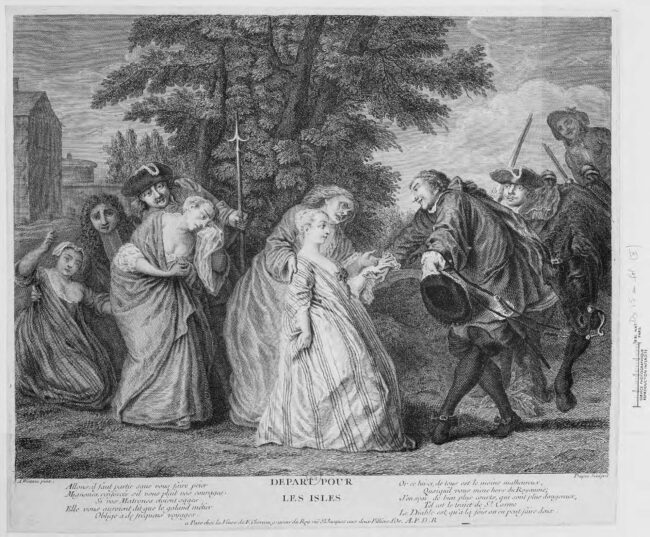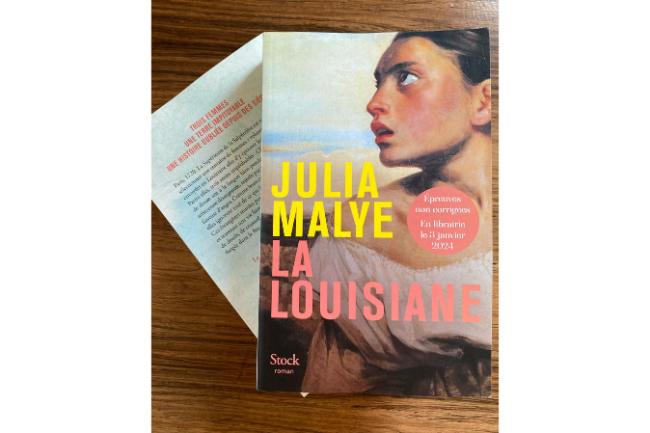Why You Have to Read ‘Pelican Girls’ This Summer
“In 1720, a ship called La Baleine left the French Atlantic coast, carrying women of childbearing age, raised or jailed at the Parisian hospital La Salpêtrière. Ready to sacrifice anything to avoid further social persecution, these women traveled to La Louisiane at a moment when female settlers were desperately needed in ‘the Mississippi,’ as this land was then known by the French. They reached the colony in 1721. Inspired by their story, this novel is a tribute to all these courageous women who, for too long, have remained in the shadows of French and American history.” Introductory note to Pelican Girls.
This is a magnificent work of historical fiction, blending spectacular creative imagination and rigorous research. (The French edition, La Louisiane, was published earlier this year, shortly before the English-language edition; Julia Malye is the author of both versions. This is also her third novel; a very impressive track record for this talented young writer.)
The “Baleine Brides” were real — there were 88 of them, between the ages of 12 and 30— and for many years their story was little known. In 2016 Julia Malye learned about these women when she read The Brides of Baleine, written by a descendent of one of the women; and she was inspired to find out more. She dug into researching the story of these women with tenacity and persistence, and the result is this wonderful book.
View this post on Instagram
Pelican Girls takes the reader into “La Louisiane” from 1721-1734, with some chapters taking place in the Illinois territory as well. The story is told primarily through the point of view of three of the women on the ship: Geneviève, Pétronille, and Charlotte, all of whom were living lives of extraordinary hardship in France and ventured across the ocean hoping for something better. Of course there was no shortage of hardship awaiting them on the crossing, or once they had landed in “the new land,” but many of them survived, and went on to found families and build prosperous lives there.
The story begins in Paris in March 1720 and ends in New Orleans in 1734. Along the way it works into the narrative key historical events such as the Natchez Revolt of 1729, and provides important background context for understanding what went so wrong between French settlers and the native people whose land they had taken in Louisiana. It also shows many settlers and natives living peacefully and respectfully side by side before their peaceful balance was broken—as is so often case—through the ruthlessness, greed, and sometimes downright stupidity of others.

A map of Louisiana by Christoph Weigel, published in 1734. Cornell University. Public domain
It is a compelling story, though to be honest for me it took me a while to become fully engaged in it. However, once I was engaged I couldn’t put it down, and I became both fascinated and moved by the story. So my advice to readers is, if you find yourself struggling a bit initially to keep all the characters and their situations straight, let go, trust the author, and stay with it: this story is a richly detailed, complex tapestry, and there are many threads to follow: but they come together beautifully in the end. It is well worth the effort to follow those threads — and you will learn so much along the way about both American and French history.
View this post on Instagram
The quality of the writing is superb. Malye’s graceful prose has such a stunning amount of historical detail that it has a kind of cinematic quality; I couldn’t help thinking what a gift to screenwriters and cinematographers this book would be. It’s hard to pick just one example of what I mean by this out of context, but I’ll try. Here’s one:
On top of a hill, the fort looms over the St. Louis River, but from the road the water remains hidden: it’s as if the fort of palings is hanging over a blur of trees and grass. There are more fields, some worked by French laborers, others by enslaved people, probably from the Sainte-Catherine Concession; a garden with tomatoes so big that they seem closer than they are; a boy following cows, mimicking with his hands the movement of their tails. Pétronille has been to the trading post only once, her second week here. As they pass, she sees the man who was then smoking his pipe is still there, puffing away at nothing.
I hope this story will be made into a film; I think it could be a wonderful one.

French unmarried women transported to Louisiana as brides for the colonists. Bibliothèque nationale de France. Public domain
In addition to lovely lyrical passages describing plants, flowers, and landscapes in lush detail, and some tender love scenes, there are some pretty harrowing “adventure” episodes also — for example a pirate attack on the ship bringing the women to America — demonstrating the scope of this author’s command of her craft.
The acknowledgements and the author’s note both provide details about the extensive research that went into writing this story, and cite many of the sources the author used — something that this reader always appreciates.
And while the history is fascinating — vividly conveyed and masterfully woven throughout the story — in the end I believe this story is above all an exemplary feminist novel. It is a story of female strength, courage, resilience, solidarity, friendship, and love. I strongly recommend it.
Lead photo credit : Photo: Julia malye/Instagram
More in book review, Pelican Girls





REPLY